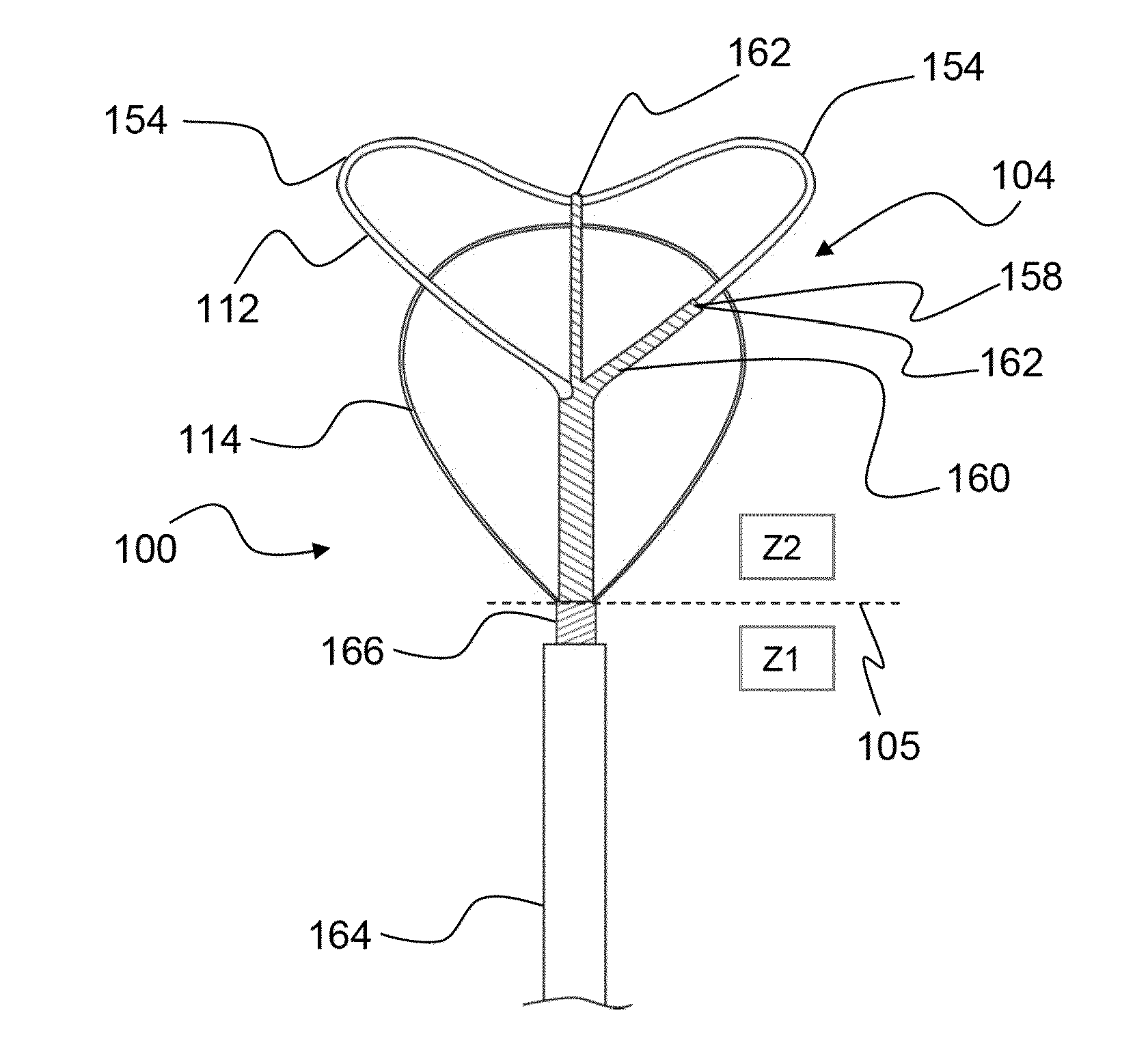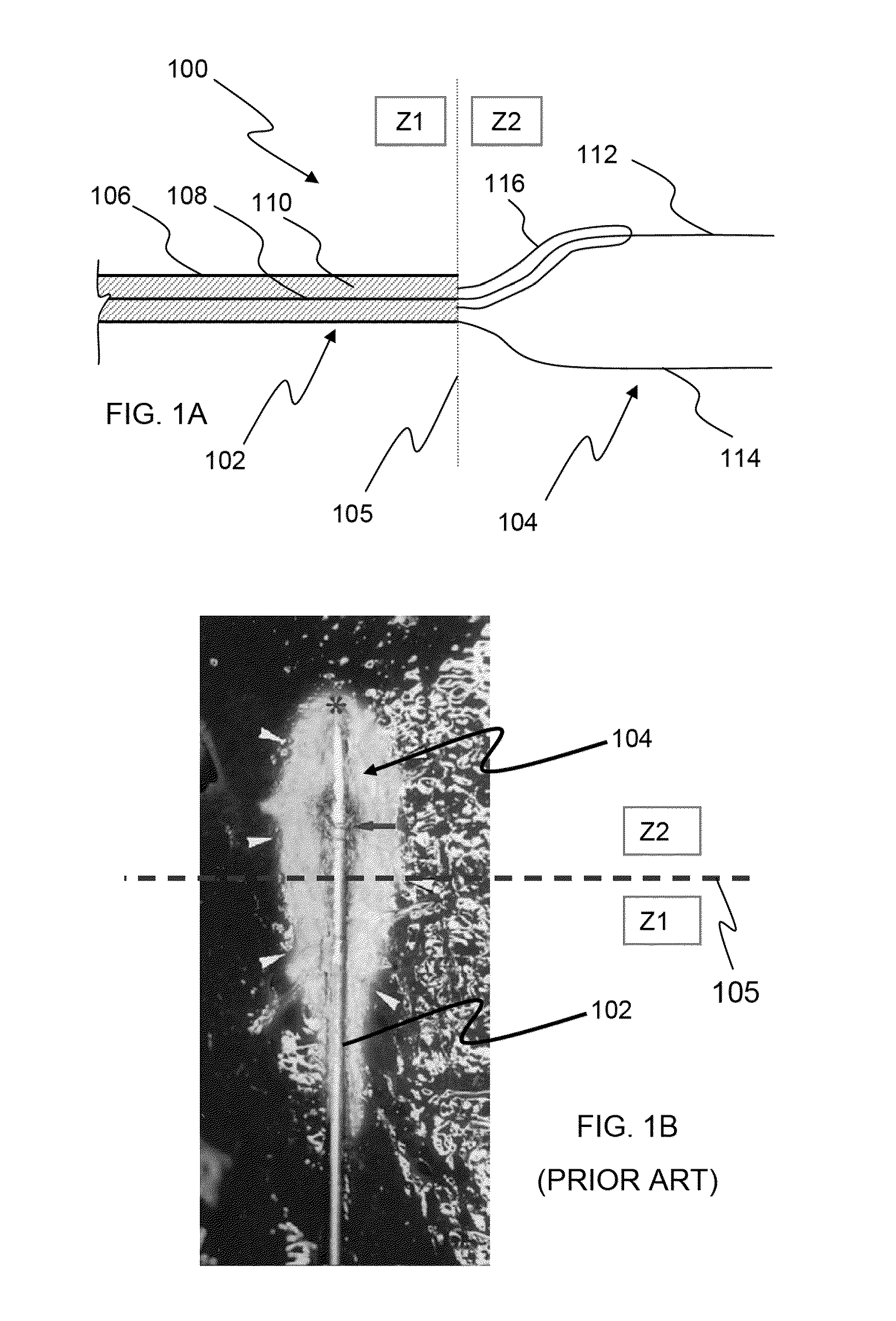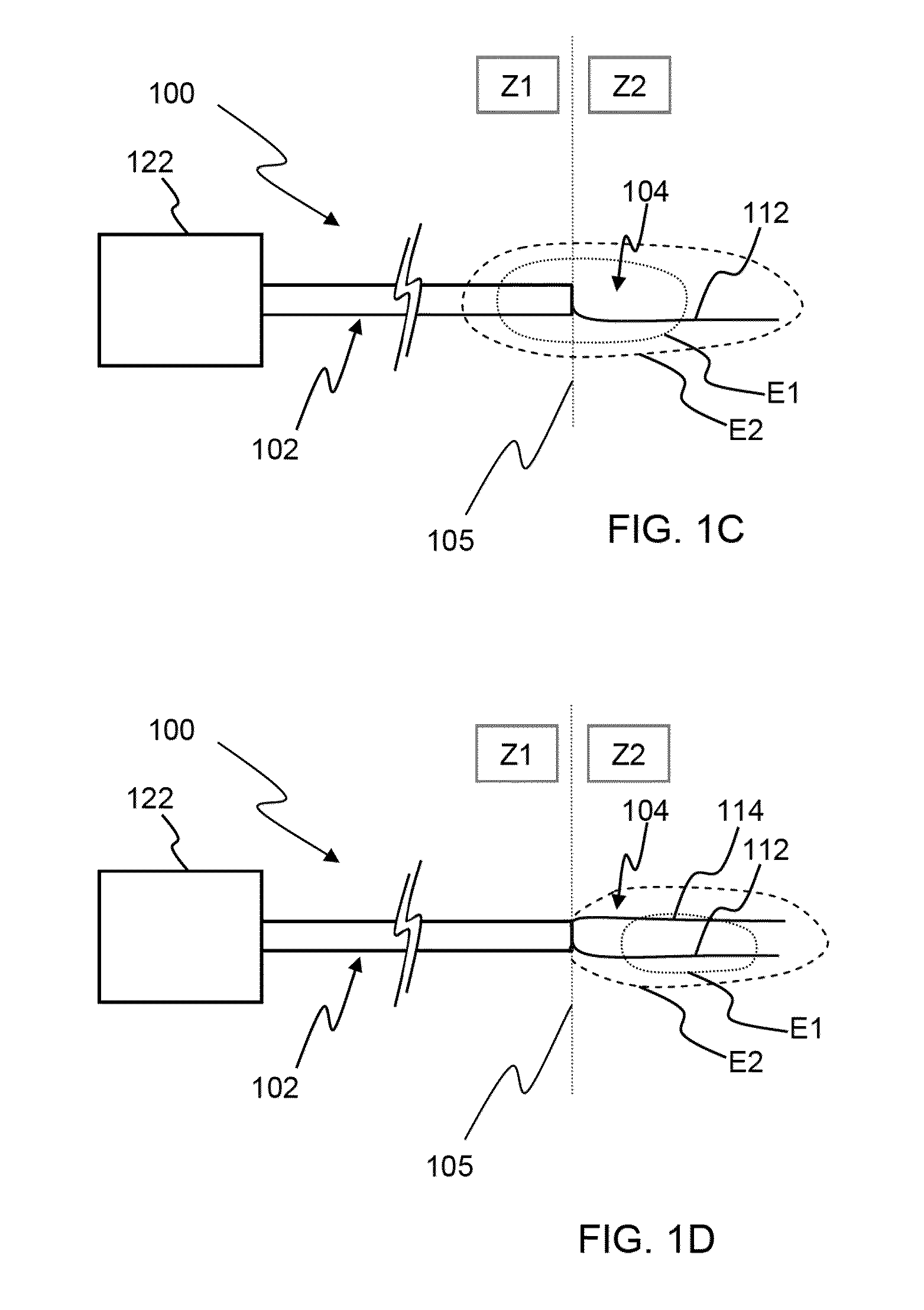Methods and devices for delivering microwave energy
a microwave energy and antenna technology, applied in the field of microwave antennas, can solve the problems of non-uniform lesion profile along the length of the antenna, device shaft heating, and shape ablation, and achieve the effects of increasing metabolism, facilitating fat extraction, and increasing the efficacy of therapy
- Summary
- Abstract
- Description
- Claims
- Application Information
AI Technical Summary
Benefits of technology
Problems solved by technology
Method used
Image
Examples
Embodiment Construction
[0048]This specification discloses multiple antenna designs, systems, structures and devices, and associated methods, which illustrate various aspects of the invention. While these systems, structures and devices, and associated methods, are discussed primarily in terms of some particular clinical applications (e.g. ablating cardiac tissue to treat arrhythmias, endometrial ablation), the methods and devices disclosed herein are applicable for use in other bodily structures, as well. These systems, structures and devices, and associated methods, may be used for ablating tissue in, or adjacent to, the brain, prostate gland, portions of the urinary tract, gall bladder, uterus and other portions of the female reproductive tract, regions of the vasculature, intestines and other portions of the lower alimentary tract, stomach and other portions of the upper alimentary tract, liver and other digestive organs, lungs, skin, mucus membranes, kidneys, reproductive organs, joints, or other orga...
PUM
 Login to View More
Login to View More Abstract
Description
Claims
Application Information
 Login to View More
Login to View More - R&D
- Intellectual Property
- Life Sciences
- Materials
- Tech Scout
- Unparalleled Data Quality
- Higher Quality Content
- 60% Fewer Hallucinations
Browse by: Latest US Patents, China's latest patents, Technical Efficacy Thesaurus, Application Domain, Technology Topic, Popular Technical Reports.
© 2025 PatSnap. All rights reserved.Legal|Privacy policy|Modern Slavery Act Transparency Statement|Sitemap|About US| Contact US: help@patsnap.com



